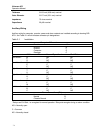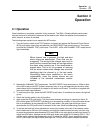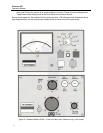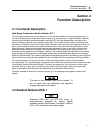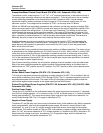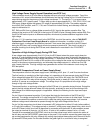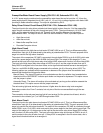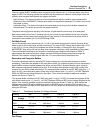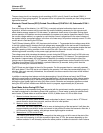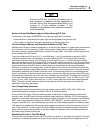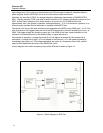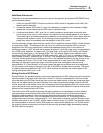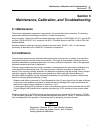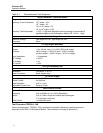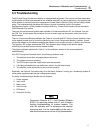
Victoreen 875
Operators Manual
4-6
The pen clamp circuit is a clamping circuit consisting of U501, pins 8, 9 and 10 and diode CR502. It
prevents pin 9 from going negative. The purpose of this is to prevent the recorder pen from being jammed
against the baseline.
Electronic Check Source (ECS) Printed Circuit Board (P/N 876A-1-92, Schematic 876A-1-
30)
Due to the range of the detector (1 to 10E7 R/h), a remotely activated radioactive check source is
impractical, since the source activity would be high and the shielding necessary for this source would
effect detector energy response. For this reason, an electronic check source is provided. During check
source operation, the detector remains connected to the system as a passive capacitive element. Since
the current-voltage relation in a capacitor is such that the current is proportional to the rate of change of
the applied voltage, an applied voltage, in the form of a linear ramp, will produce a steady current. It is this
current which is read during the ECS test.
The ECS board (drawing 876A-1-3D) has two main functions: 1. To generate the low voltage ramp which,
in the high voltage supply, develops the high voltage ramp responsible for the test current in the detector
during the ECS test. 2. To monitor the current flowing during the ECS test, and recognize whether the test
signifies a passing of failing condition in the circuits of the unit. One of the circuits involved in this
monitoring process is actually on the power supply printed circuit board.
The voltage ramp which develops the detector current during the ECS test rises from 0 to 506 volts over
three seconds, so that the rate of change of voltage is approximately 170 V/second. The capacitance of
the detector is approximately 435 picofarads and therefore, the steady current during the rise of the
voltage ramp is approximately 7 x 10
-8
amperes, which puts the panel meter at about one-third full scale.
The ramp occurs when ECS is initiated for a period of about six (6) seconds, during which time the
system is not acting as a radiation monitor.
The ECS test may be initiated at the will of the operator. For this purpose there is a manually operated
ECS push button. If the ECS test is not initiated by the operator, it will take place automatically every 17.1
minutes. After each manually initiated test, the automatic circuits are reset so that a test will be initiated
17.1 minutes later.
In addition to causing visual alarms and relay de-energizing if circuit failures are found, the ECS test
affects the panel meter as in the three cases described below. It is the processing of the voltage read by
the panel meter during the ECS test that is responsible for the action of the circuits directly involved in
driving the visual (green light) and relay (fail) alarm circuits. Recorder and computer outputs are muted
during the ECS and will indicate zero while the test is in progress, approximately six (6) seconds.
Panel Meter Action During ECS Test
The meter action to be expected during the test period with the containment monitor operating properly
can best be explained by considering three initial conditions: 1) Panel meter is resting at extreme lower
end of scale; 2) Panel meter on scale but below 10
3
R/h; 3) Meter above 10
3
R/h at start of test.
1. Meter at extreme lower end of scale
In this case, the meter needle should remain motionless for about 1 second, rise to 10
3
R/h and
remain there for about three seconds, and then fall to its initial position.
2. Meter on scale, but below 10
3
R/h
In this case, the meter needle should fall to zero at the beginning of the test period. It will then rise
to approximately one-third full scale, and remain in this position for about four seconds. After this, it
will resume its original reading, with perhaps some slight negative overshoot.
3. Meter above 10
3
R/h at start of test
This case is quite similar to the above except that the meter may not fall to zero at the start of the
test, and at the upswing, it will take a position higher than 10
3
R/h, the excess depending on the
ambient radiation. It will ultimately resume the same position as before the test as in item 2 above.



